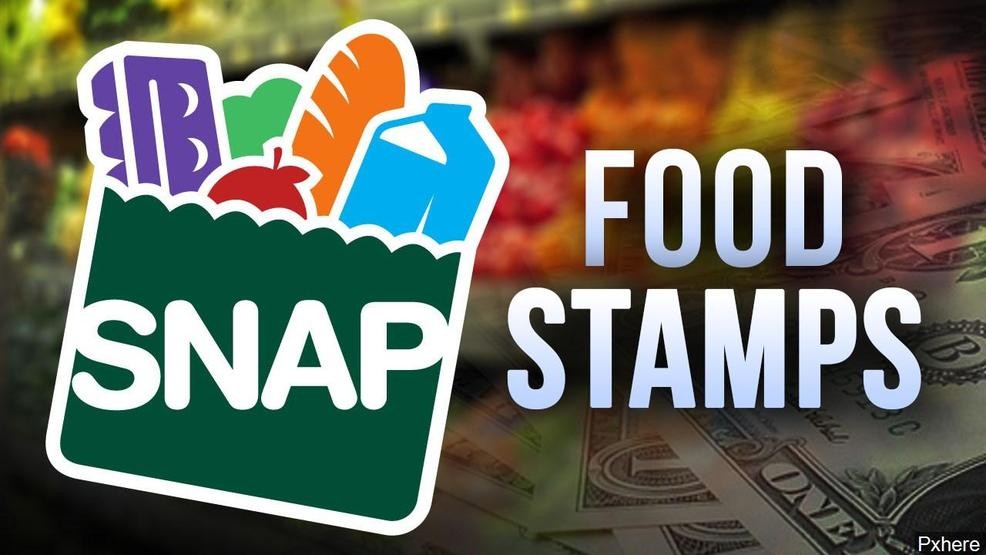
By Phil McCausland
The Trump administration’s rule change would limit states’ abilities to provide residents access to food stamps.
The Trump administration Wednesday formalized work requirements for recipients of food stamps, a move that will cause hundreds of thousands of people to lose access to the Supplemental Nutrition Assistance Program or SNAP.
Agriculture Secretary Sonny Perdue and Brandon Lipps, the deputy undersecretary for the USDA’s Food Nutrition and Consumer Services, spent about 18 minutes on a call with reporters outlining the changes to the rule that will take effect April 1.
“We’re taking action to reform our SNAP program in order to restore the dignity of work to a sizable segment of our population and be respectful of the taxpayers who fund the program,” Perdue said. “Americans are generous people who believe it is their responsibility to help their fellow citizens when they encounter a difficult stretch. That’s the commitment behind SNAP, but, like other welfare programs, it was never intended to be a way of life.”
The USDA rule change affects people between the ages of 18 and 49 who are childless and not disabled. Under current rules, this group is required to work at least 20 hours a week for more than three months over a 36-month period to qualify for food stamps, but states have been able to create waivers for areas that face high unemployment.
Download the NBC News app for breaking news and politics
The new rule would limit states from waiving those standards, instead restricting their use to those areas that have a 6 percent unemployment rate or higher. The national unemployment rate in October was 3.6 percent.
During the call Wednesday, the USDA said that about 688,000 people would lose access to food stamps. That’s down from its earlier estimate that 750,000 people would be affected.
The USDA said that this was an extension of President Donald Trump’s April 2018 executive order, called “Reducing Poverty in America by Promoting Opportunity and Economic Mobility,” that aimed to create more work programs and limit public assistance.
This work requirement rule would save the government $5.5 billion over five years, the USDA said.
The agency said that it found 2.9 million adults on the SNAP rolls were able-bodied and did not have dependents, and it said 2.1 million were not working.
Sen. Debbie Stabenow, D-Mich., the ranking member of the Senate Committee on Agriculture, Nutrition and Forestry, said this rule would do little to help anyone find work. All the rule change does is strip people from accessing the benefit, she said.
“This Administration is out of touch with families who are struggling to make ends meet by working seasonal jobs or part time jobs with unreliable hours,” Stabenow said. “Seasonal holiday workers, workers in Northern Michigan’s tourism industry, and workers with unreliable hours like waiters and waitresses are the kinds of workers hurt by this proposal.”
The senator also noted that an attempt to add work requirements to SNAP had failed in Congress when they had considered the Farm Bill last year. The House rejected it in a bipartisan vote of 330-83, and the Senate voted down a similar amendment 68-30.
“There’s a reason Republicans and Democrats overwhelmingly rejected this callous proposal in the Farm Bill and instead focused on bipartisan job training opportunities that actually help families find good paying jobs,” she said.
Hunger advocates have repeatedly emphasized that SNAP is intended to address hunger and not compel people to work. Many also noted that those affected are impoverished, tend to live in rural areas, often face mental health issues and disabilities. Black and Hispanic households, women and LGBTQ people would be disproportionately affected by the change.
“The policy targets very poor people struggling to work — some of whom are homeless or living with health conditions,” said Stacy Dean, the food assistance policy vice president at the Center on Budget and Policy Priorities. “Taking away basic food assistance from these individuals will only increase hardship and hunger, while doing nothing to help them find steady full-time work.”
The original waivers tended to help severely economically disadvantaged people, a Mathematica Policy Research and the Robert Wood Johnson Foundation study from earlier this year concluded. Ninety-seven percent of the SNAP participants who would be affected by this change live in poverty, and 88 percent have household incomes at or below 50 percent of the poverty level or less than $600 a month — a much larger portion than the overall average — the study said.
This is the first of three rule changes aimed to augment the SNAP program proposed by the Trump administration. The two others would “reform” the way 40 states automatically enroll families into SNAP when they receive other forms of federal aid and cap deductions made for housing and utility costs, which are considered when a person applies for food stamps.
Those rules have concluded their public comment period. Lipps did not say Wednesday when he believed they would be implemented.
Some military families have to choose between buying groceries or paying bills
A study by the Urban Institute released this week examined the three rules in combination for the first time and found that 3.7 million fewer people would receive SNAP in an average month, 2.2 million households would see their average monthly benefits drop by $127, more than 3 million others would see an average drop of $37 per month, and 982,000 students would lose access to free or reduced lunches.
“What we found is that overall the three proposed changes would reduce the number of households participating in SNAP by about 11 percent if this was implemented in 2018,” Laura Wheaton, a senior fellow at the Urban Institute who conducted the study, previously told NBC News. “It’s about a 9.4 percent reduction in the number of people participating and about an 8 percent reduction in overall benefits.”

Phil McCausland is an NBC News reporter focused on the rural-urban divide.
Sponsored Stories










